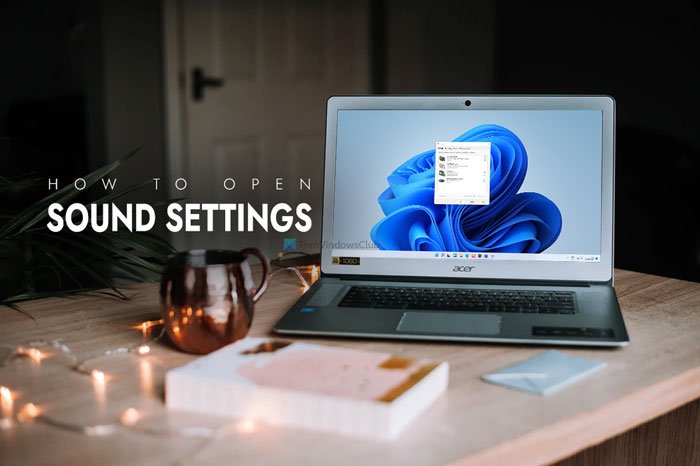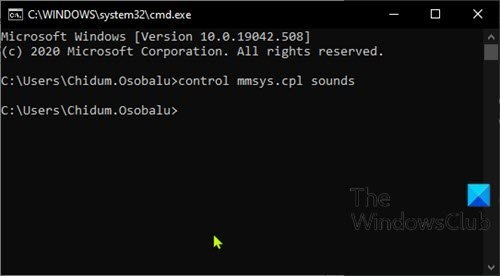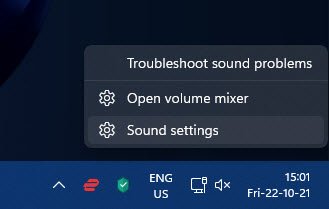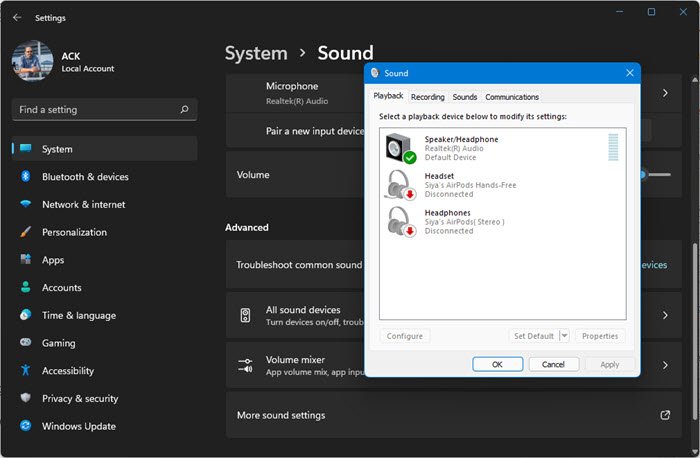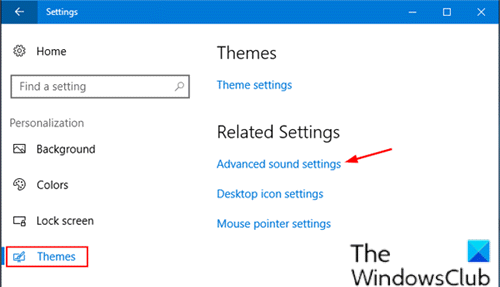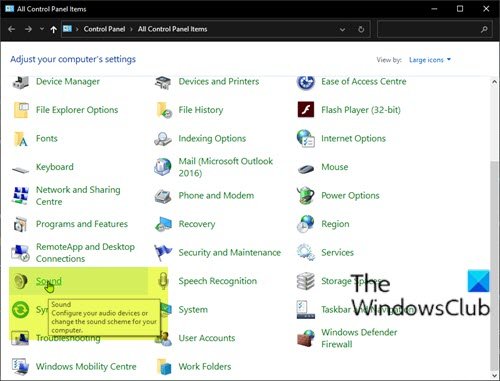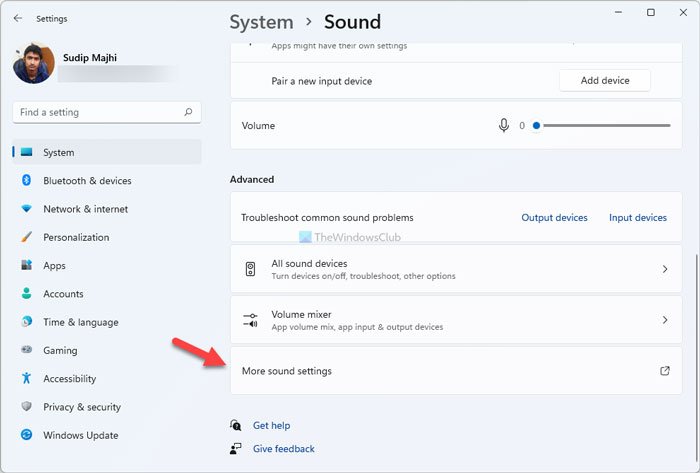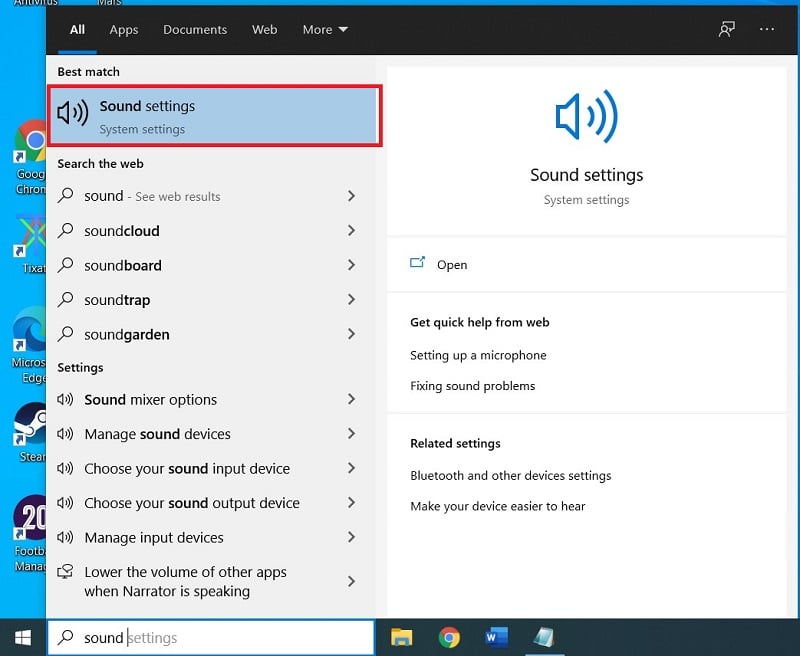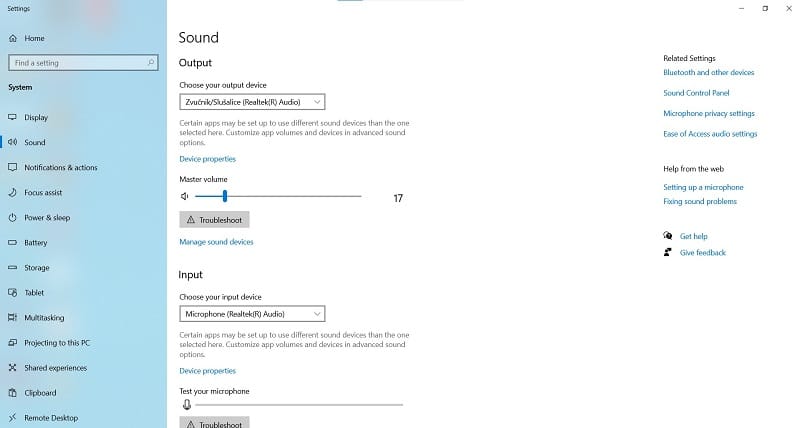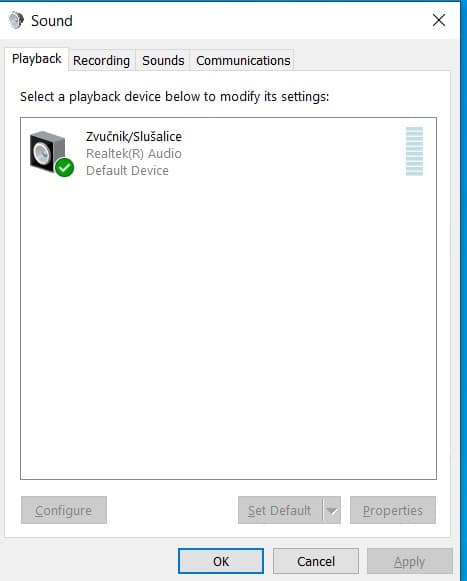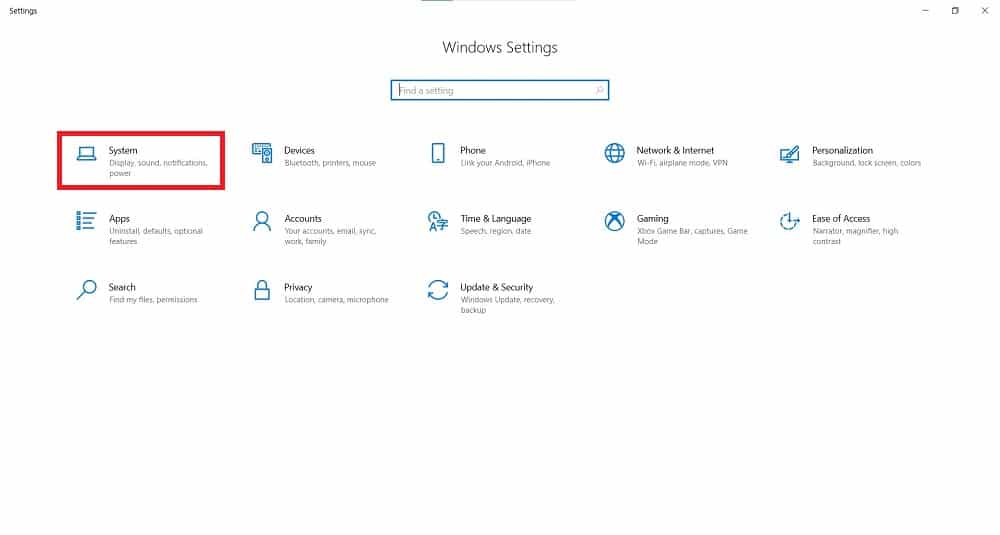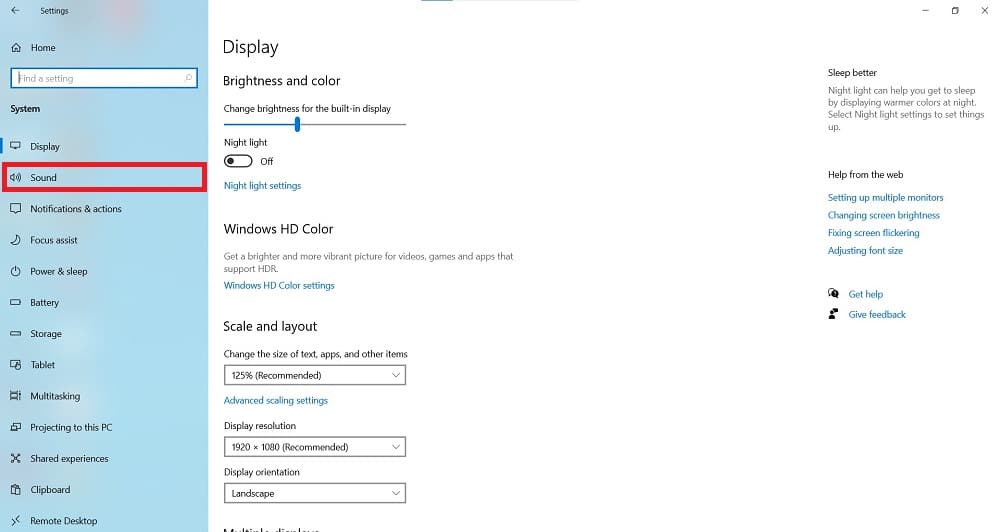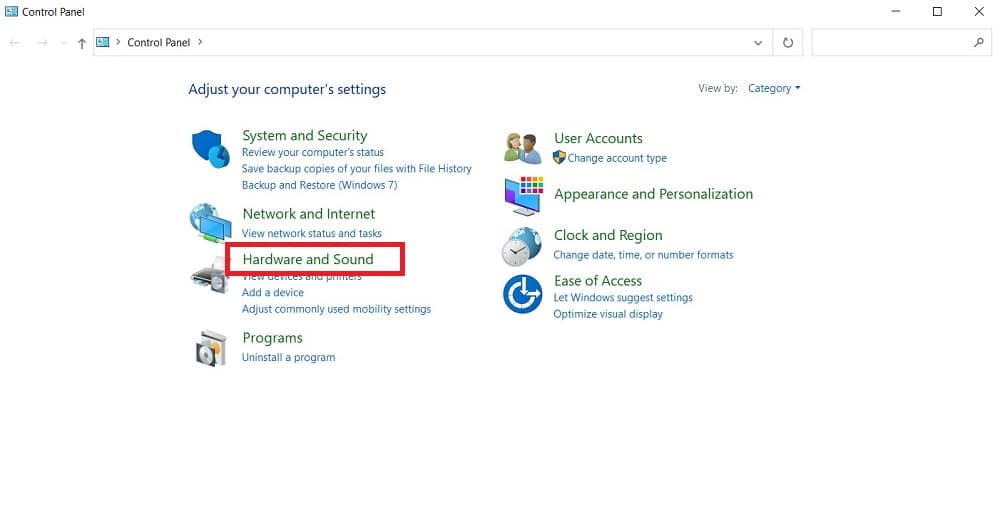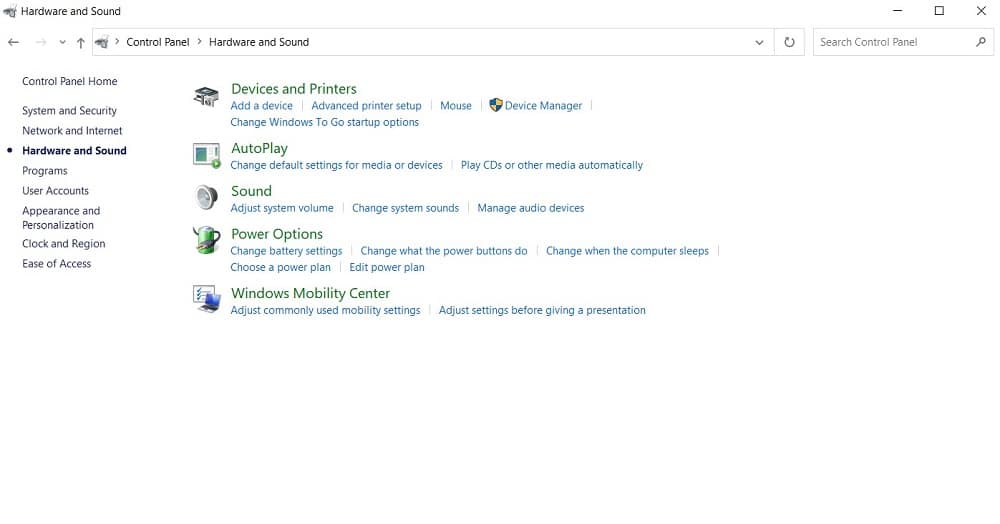Download Windows Speedup Tool to fix errors and make PC run faster
To adjust, customize, or configure the sound scheme for your device, you have to access the sound settings in Windows 11/10. You may need to perform these actions because you might have a problem with your PC’s audio playback, or wonder why the sound is recording at too low volume. In this post, we will show you the 5 ways to open Sound Settings in Windows 11/10.
The Sound settings interface offers you the options to do things such as change the sound effects, disable audio enhancements, modify individual app sounds, and more. It’s all going to depend on what you mostly use your computer for.
We can open sound settings in Windows 11 or Windows 10 in 5 quick and easy ways. We’ll explore this topic under the methods outlined below in this section:
- Via Search
- Via Run or Command Prompt
- Via Sound icon on Taskbar
- Via Settings app
- Via Control Panel.
Let’s take a look at the description of the step-by-step process in relation to each of the methods.
1] Open Sound Settings via Search
- Click the Search icon or bar on the extreme left of the taskbar OR press the Windows key on the keyboard.
- Type the word
sound. - Select Sound settings from the result or click Open on the right pane.
2] Open Sound Settings via Run or Command Prompt
- Press Windows + R key combination to open the Run dialog.
- In the Run dialog box, type
control mmsys.cpl soundsormmsys.cpland hit Enter.
OR
- Press Windows key + R to invoke the Run dialog.
- In the Run dialog box, type
cmdand hit Enter to open Command Prompt. - In the command prompt window, type or copy and paste either of the commands as above and hit Enter.
3] Open Sound Settings via Sound icon on Taskbar
- Right-click on the Sound icon (if not present click the chevron to show hidden icons) in the notification area or system tray at the extreme right corner area of the taskbar.
- Click on Open Sound settings (Windows 11) or Sounds (Windows 10) from the menu.
In Windows 10, you can right-click on the volume icon in the system tray and select the Sound settings option to open the traditional panel. However, in Windows 11, you will end up with the Windows Settings if you do that.
4] Open Sound Settings via Settings app
Windows 11
- Press the Windows key + I to open Windows 11 Settings.
- Tap or click System category.
- Select Sound in the right pane.
- Scroll down till you see More Sound settings, and click on it
- Sound settings will open.
Related: How to open old Sound settings panel in Windows 11
Windows 10
- Press the Windows key + I to open Settings.
- Tap or click Personalisation category.
- Select Themes in the left pane.
- Click the Advanced sound settings link on the right pane of the window.
Note: Depending on the version of Windows 11/10 you’re currently running, this option may not be available for you.
5] Open Sound Settings via Control Panel
To open the old Sound settings panel in Windows 11/10 using Control Panel, follow these steps:
- Press Windows key + R to invoke the Run dialog.
- In the Run dialog box, type
controland hit Enter to open Control Panel. - From the top right corner of the window, set the View by option to Large icons.
- Click Sound.
That’s it on the 5 ways to open Sound Settings on Windows 11/10!
Where are my Sound settings in Windows 11?
You can find Sound settings in the Windows Settings panel and Control Panel. Press Win+I and go to System > Sound to open Sound settings in Windows Settings panel. On the other hand, open Control Panel and click on the Sound option to do the same. Both include different options for your convenience.
To open the old Sound settings panel in Windows 11, follow these steps:
- Right-click on the volume icon in the system tray.
- Select the Sound settings
- Scroll down and find out More sound settings
- Click on this option.
How do I change my Sound settings in Windows 11?
To change the sound settings in Windows 11, you have to open it via Windows Settings or Control Panel. After that, you can manage your playback devices, recording devices, volume, and so on.
Obinna has completed B.Tech in Information & Communication Technology. He has worked as a System Support Engineer, primarily on User Endpoint Administration, as well as a Technical Analyst, primarily on Server/System Administration. He also has experience as a Network and Communications Officer. He has been a Windows Insider MVP (2020) and currently owns and runs a Computer Clinic.
Прослушивание всех звуков в одном канале
Windows позволяет преобразовать стереозвук в один канал, чтобы вы могли слышать все, даже если вы используете только один наушник. Выберите кнопку Пуск, затем выберите Параметры > доступ> звук и включит переключатель Монозвук.
Визуализация звуковых оповещений
Если вам трудно слышать звуковые оповещения, вы можете включить их визуальное отображение на компьютере. Выберите кнопку Пуск, а затем Параметры > доступ >звук .
В области Мигать мой экран во время звуковых уведомленийвыберите, как должны отображаться звуковые оповещения. Вместо того чтобы полагаться только на звуковые оповещения, вы можете настроить параметры таким образом, чтобы при получении уведомления мигало активное окно, заголовок активного окна или целый экран.
Увеличение длительности уведомлений
По умолчанию уведомления Windows исчезают через пять секунд после появления. Если вам нужно больше времени для их прочтения, вы можете увеличить время отображения уведомлений.
Выберите кнопку Пуск, а затем выберите Параметры > доступ >визуальных эффектов. Затем в области Отклонятьуведомления по и после этого времени выберите нужное количество времени.
Подписи
Windows позволяет настраивать различные параметры скрытых субтитров, например их цвет, размер и фон. Выберите кнопку Пуск, а затем Параметры > доступ к >субтитров . Затем в области Стиль подписивыберите, как должны отображаться подписи.
Прослушивание всех звуков в одном канале
Windows позволяет преобразовать стереозвук в один канал, чтобы вы могли слышать все, даже если вы используете только один наушник. Выберите кнопку Пуск, а затем Параметры >Доступ > звук и включит переключатель в области Включить монозвук.
Визуализация звуковых оповещений
Если вам трудно слышать звуковые оповещения, вы можете включить их визуальное отображение на компьютере. Выберите кнопку Пуск, а затем Параметры > доступ к > аудио .
В разделе Визуально отображать звуковые оповещения выбрать способ отображения звуковых сигналов. Вместо того чтобы полагаться только на звуковые оповещения, вы можете настроить параметры таким образом, чтобы при получении уведомления мигало активное окно, заголовок активного окна или целый экран.
Увеличение длительности уведомлений
По умолчанию уведомления Windows исчезают через пять секунд после появления. Если вам нужно больше времени для их прочтения, вы можете увеличить время отображения уведомлений.
Выберите кнопку Пуск, а затем Параметры > доступ >экран . В разделе Отображать уведомления в течение выберите нужное время.
Скрытые субтитры
Windows позволяет настраивать различные параметры скрытых субтитров, например их цвет, размер и фон. Выберите кнопку Пуск, а затем Параметры > доступ > субтитров , а затем выберите, как должны отображаться субтитры.
How the sound settings are set on your Windows 10 computer might not be all that important to you, but why settle for less? With a few changes here and there, you can improve your computer’s sound quality.
You can do things such as change the sound effects, disable audio enhancements, modify individual app sounds and more. It’s all going to depend on what you mostly use your computer for.
Also read: Windows Sound Not Working? Here Are 12 Fixes
How to Change the Sound Effects on Windows 10
To adjust the sound effects, press Win + I (this is going to open Settings) and go to «Personalization -> Themes -> Sounds.» For faster access, you can also right-click on the speaker icon and choose Sounds.
Under Sound Scheme click on the dropdown menu and choose between «Windows Default» or «No Sounds.» In Program Events you can go with a large variety of sounds. If you want to hear what the sound looks like under Sounds, click the «Test» button.
Also read: 12 of the Best Windows Sound Schemes to Install on Your PC
How to Turn Off Windows 10 Audio Enhancements
Just like you did before, open the Sound Control Panel by right-clicking on the speaker icon. Click on Sounds, followed by the Playback tab. Right-click on the Speakers option and click on Properties.
Once you’re in the Speakers Properties, click on the Enhancements tab, and check the box for the option that says «Disable all enhancements.»
If you’ve connected your device and the sound is not working, click on Cancel, and you should be taken back to Sound Properties. Click on the Playback tab, choose a different default device and don’t forget to select the «Disable all enhancements» box.
Also read: How to Use Krisp for Calls, Games, and Recording
How to Turn on Windows Sonic
Before you can start using Windows Sonic, you will need to turn off any sound effects you may have enabled. Once you’ve turned them off, right-click on the speaker icon and click on the Open Volume Mixer option.
Click on the speakers, and the Speaker Properties box should appear. Select the Spatial sound tab, and click on the dropdown menu. In the menu choose «Windows Sonic for Headphones,» and make sure that you’ve selected the 7.1 virtual surround sound option that’s right below the dropdown menu. Don’t forget to click OK.
Also read: How to Add Windows 95 (Or Any Other) Startup Sound to Windows
How to Adjust the Volume for a Particular App
Giving the apps you’re using their own personal volume level is an easy and quick task. Right-click on the speaker icon, select the Open Volume Mixer and the volume level for the apps you have open will appear. Just adjust the slider for each app accordingly, and enjoy your new volume settings.
How to Update Audio Drivers to Fix Problematic Audio Devices
Keeping your audio drivers updated is always a good idea since it can help you avoid unwanted sound problems. To update them, press Win + X, and click on Device Manager. Double-click on the Audio inputs and outputs, and find the device whose audio is not at its best.
Right-click on the device, and select update driver. When the new window appears, select Search automatically for updated driver software, and follow the steps that will appear on your display.
Conclusion
There are various tips you can follow to improve your computer’s sound. It all depends on your particular wants and needs. How do you keep your computer’s sound perfect? Share your tips with us in the comments below.
Also read: 16 of the Best Sources for Calming Sounds, White Noise & Rain
Just a simple guy that can’t enough of Technology in general and is always surrounded by at least one Android and iOS device. I’m a Pizza addict as well.
Subscribe to our newsletter!
Our latest tutorials delivered straight to your inbox
Tired of hearing the default Windows 10 sounds? You can change them
What to Know
- Enter Change system sounds in the Windows search bar. The Sound tab opens.
- Under Program Events, choose an event; then select a Sound, or Browse to upload a .WAV file. Test > Apply > OK.
- To turn off sound effects, select No Sounds in the Sound Scheme drop-down menu > Apply > OK.
Microsoft offers numerous ways to customize its Windows operating systems. This article explains how to adjust the sound settings on PCs running Windows 10.
How to Change Windows 11 System Sounds
Which Windows Sounds Can Be Customized In Windows 10?
Windows 10 allows you to set custom sounds for system notifications (like low battery alerts) and sound effects for actions such as closing a program or emptying the recycle bin. To help you navigate the many different kinds of system sounds, the sound settings menu divides them up into the following categories:
- Windows (system): Includes sounds for things like battery notifications and instant messages.
- File Explorer: Handles sounds for things like moving menu items and blocked pop-up windows.
- Windows Speech Recognition: This category deals with sounds for things like turning the speech recognition feature on and off.
How to Access Windows 10 Sound Settings
The easiest way to access your Windows 10 system sound settings is to type Change System Sounds in the Windows search box, and then select Change System Sounds.
To access the sound settings from the Windows control panel:
-
Select the Windows icon in the taskbar, then select the gear to open Windows Settings.
-
Select System.
-
Select Sound in the left pane, then select Sound Control Panel under Related Settings in the top-right corner.
-
Select the Sounds tab in the window that pops up.
How to Customize Windows 10 Audio Settings
There are two main ways you can change your Windows 10 system sounds once you’ve accessed the sound settings: You can either totally turn off the system sounds, or you can adjust and change the sound effects assigned to each program event. An example of a program event would be a low battery notification.
How to Change Sound Effects for an Event in Windows 10
Once you have accessed your sound settings:
-
Select an event under Program Events.
-
Select the box under Sounds to choose from a list, or select Browse to search your computer for your own sound effects files.
Your chosen sound effect must be in the WAV format.
-
Once you’ve selected a sound effect, select Test for a preview, then select Apply. and OK.
How to Turn Off the System Sounds
To turn off all of the system sounds in Windows 10:
-
In the Windows 10 sound settings, select the box under Sound Scheme, then select No Sounds.
-
Select Apply, then select OK.
-
To turn off the sound for individual events, select one of the options under Program Events.
-
Select the box under Sounds. Choose None from the list that appears.
-
Select Apply and OK.
Thanks for letting us know!
Get the Latest Tech News Delivered Every Day
Subscribe
Are you having problems with playing the sound on your computer? Would you like to record audio, but the recording volume is lower than expected? If you need to make adjustments in that department, it’s time to check Windows 10 sound settings.
This guide will reveal six methods to open sound settings in Windows 10. You’ll see how easy it is to manage volume, input, and output devices and change the desired settings. If you are ready, check out these ways to adjust audio on Windows 10 and pick your favorite!
Method 1. Open Sound Settings in Windows 10 via Search
If you are a new Windows user, you’ll find this a simple way to access the sound settings. The latest version of this operating system features a search field in the taskbar on the bottom. The Search option is active by default, so you should notice it as soon as you check out the taskbar.
All that you should do is type Sound Settings in that field. Even the first word will be sufficient as the system will show the available options immediately. You’ll notice that there are shortcuts to managing sound devices and other audio-related options.
If you want to access the Sound Settings main screen, click on the icon at the top. It shouldn’t take more than a second to enter the app. Here’s how the main screen will look:
From here, it should be easy to make the desired audio adjustments.
Method 2. Open Sound Settings in Windows 10 via the Sound Icon on Taskbar
The second method is also offered by the taskbar at the bottom of the screen. The only difference is that your focus should now be on the right section of the taskbar. Among other information, you’ll notice the Sound icon that will look like below:
Use your mouse or laptop touchpad to navigate the cursor to this icon. Once it hovers over it, use right-click to open the Sound menu.
That menu will offer the following options:
You’ll find the Sound settings option on the top, so it’s easy to click it and access that menu. However, it’s possible to access some other audio-related options from this place. If you have sound problems, want spatial sounds, or need to use a volume mixer, this is also a fast-access way of entering those adjustments.
Method 3. Open Sound Settings in Windows 10 via the Run Command Window
Experienced Windows users are surely aware of the Run command window. It serves to run a variety of apps, and Sound Settings aren’t an exception.
You can open the Run window by doing one of the following:
- Type “Run” in the Search field in the taskbar.
- Press Win + R on your keyboard.
Regardless of the method chosen, the following screen will appear:
The command to type is “mmsys.cpl.” Press Enter, and it shouldn’t take more than a second for the settings to load.
Now, there’s an important difference when using this method. You won’t enter the actual audio settings. Instead, this is the way to secure direct Sound Control Panel Windows 10 access. Here is how that panel looks:
You can change many audio-related settings here. That includes modifying playback and recording devices and performing other adjustments. The odds are you’ll find everything you need in this control panel, so don’t hesitate to explore it.
Method 4. Open Sound Settings in Windows 10 via Command Prompt
The command prompt is another way of accessing the Sound control panel in your Win 10 operating system.
Here’s how to open the command prompt in Windows 10:
- Use the Search option in the taskbar and type “command prompt.”
- Open the Run window by pressing Win + R. Type “cmd” and press Enter.
The following prompt will show up on the screen:
Next, type “mmsys.cpl” and press Enter. Be patient while the system executes the command and opens the Sound panel.
The next way of accessing Sound adjustments in Windows 10 is to use the actual Settings app. There are multiple methods of opening Settings in Windows 10, but these are the simplest:
- Press the Notification icon in the bottom-right of the taskbar to open the menu. From there, click on All Settings.
- Use the search field and type Settings. Click on the app to open it.
Once you run this app, you’ll see the following screen:
Audio settings are a part of the system adjustments. Click on the upper left option to access it.
The system will open Display options by default. To access the Sound settings, use the left-hand menu.
Method 6. Open Sound Settings in Windows 10 via Control Panel
If you are an old-fashioned Windows user, you might appreciate Control Panel more than the actual Settings app. You can use it to access Sound adjustments in Windows 10, but you need to open the control panel first.
Do that from the Run window (Press Win + R, and then type Control Panel), or use the taskbar search option.
This is the screen that will load:
Next, click on Hardware and Sound, and you’ll see an entire submenu dedicated to audio options.
FAQs About Sound Settings in Windows 10
What Adjustments Can I Make in the Sound Settings on Windows 10?
The main screen allows you to pick input and output devices, adjust volume, and troubleshoot audio problems. From the Sound Settings, you can also access the Audio control panel and other helpful options.
How to Change the Speakers to Use on Windows 10?
Once you enter the Audio settings Windows 10 menu, you’ll find “Choose Your Output Device” at the top. Click on it to open the dropdown menu and choose the desired speakers.
My Sound Is Not Working. What Can I Do?
Here are some suggestions on how to fix sound issues:
- Check the cables to ensure everything is connected properly.
- Update audio drivers.
- Install the latest Win 10 updates.
- Restart your computer.
- Check Sound Settings to see if the volume is okay and the speakers are recognized. You can use an Audio troubleshooter if necessary.
Conclusion
Whether you want to watch movies, listen to music, or record audio, optimal Sound Settings are imperative. Windows 10 offers multiple methods to access audio-related adjustments. This article presented the most commonly used ways, and they all take less than a minute. If you have a sound issue or want to adjust audio, don’t hesitate to use these methods to set everything to your preferences!
